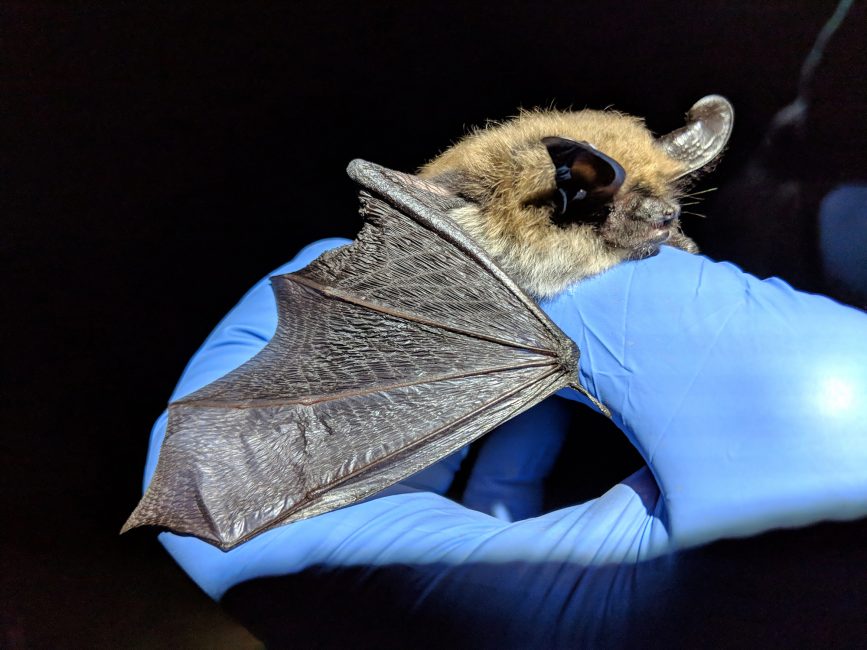
October 28, 2021
Evolution’s Sublime Bat Wing
- as seen by -
 Sarah H. Olson
Sarah H. Olson
The bumpy folded skin on the wing of this Myotis evotis, or long-eared bat, matches the ridged topography of the Little Belt Mountains, where it lives.
Located in central Montana, the Little Belts are one of the mountain ranges that mark the landscape transition from the smooth Midwest plains to the rugged Continental Divide. A Wildlife Conservation Society-led scientific team was there studying whether different bat species use different energetic strategies to hibernate.
One evening late in September, this individual flew into our mist net that was positioned by a sloped cave entrance at an elevation of 5,800 feet. With a total mass of 7.5 grams, equivalent to three dimes, this individual displays the brilliance and intricate features of bat evolution.
The bat’s wings are a webbed version of our hands with translucent skin stretched between finger bones and engineered to sustain flight. Wings help control body temperature during flight, acting as a radiator, and during hibernation, they influence water loss. Once we had measured evaporative water loss and metabolic rates, the bats we captured that night were released.
Data from this bat and others are helping us identify different hibernation strategies that may influence which bat species are susceptible to a fungal disease called white-nose syndrome.
EDITOR’S NOTE: Celebrate the role of bats in nature. Bat Week 2021 is October 24-31, a time to raise awareness about the need for bat conservation.




Leave a Comment